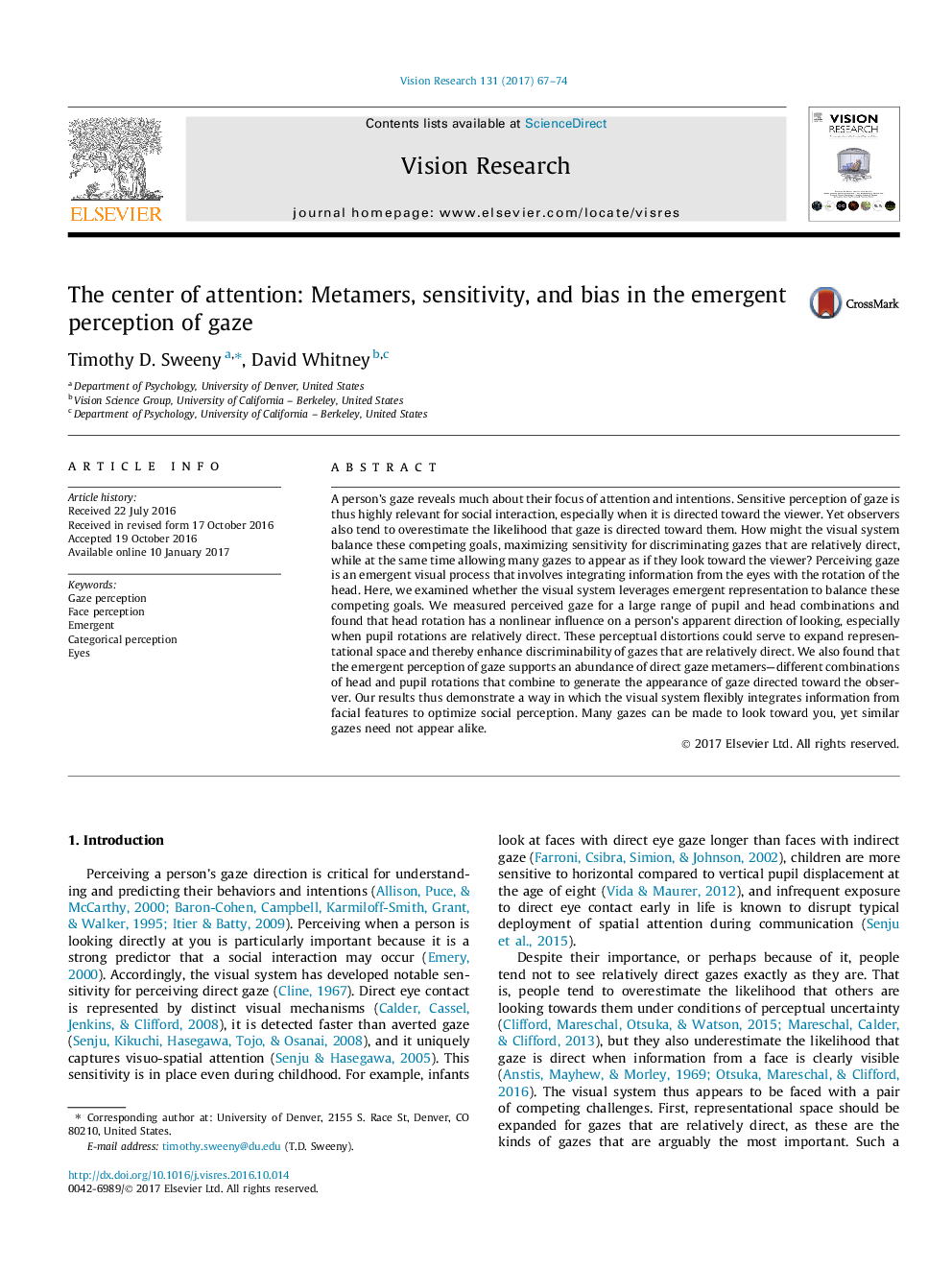| Article ID | Journal | Published Year | Pages | File Type |
|---|---|---|---|---|
| 5705945 | Vision Research | 2017 | 8 Pages |
Abstract
A person's gaze reveals much about their focus of attention and intentions. Sensitive perception of gaze is thus highly relevant for social interaction, especially when it is directed toward the viewer. Yet observers also tend to overestimate the likelihood that gaze is directed toward them. How might the visual system balance these competing goals, maximizing sensitivity for discriminating gazes that are relatively direct, while at the same time allowing many gazes to appear as if they look toward the viewer? Perceiving gaze is an emergent visual process that involves integrating information from the eyes with the rotation of the head. Here, we examined whether the visual system leverages emergent representation to balance these competing goals. We measured perceived gaze for a large range of pupil and head combinations and found that head rotation has a nonlinear influence on a person's apparent direction of looking, especially when pupil rotations are relatively direct. These perceptual distortions could serve to expand representational space and thereby enhance discriminability of gazes that are relatively direct. We also found that the emergent perception of gaze supports an abundance of direct gaze metamers-different combinations of head and pupil rotations that combine to generate the appearance of gaze directed toward the observer. Our results thus demonstrate a way in which the visual system flexibly integrates information from facial features to optimize social perception. Many gazes can be made to look toward you, yet similar gazes need not appear alike.
Related Topics
Life Sciences
Neuroscience
Sensory Systems
Authors
Timothy D. Sweeny, David Whitney,
